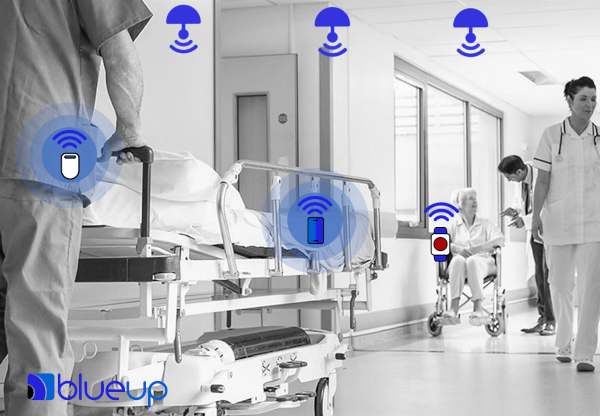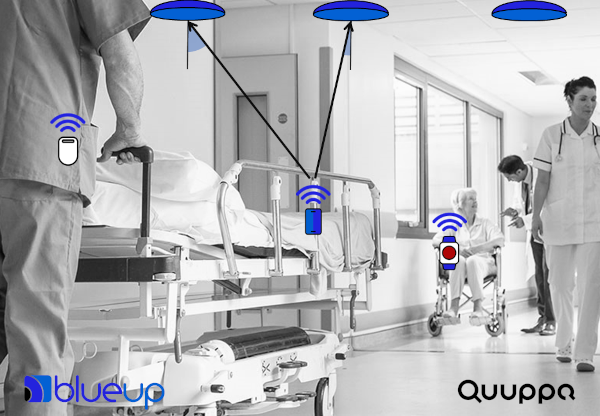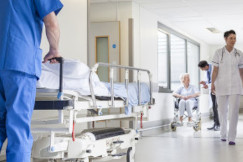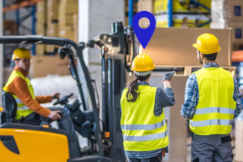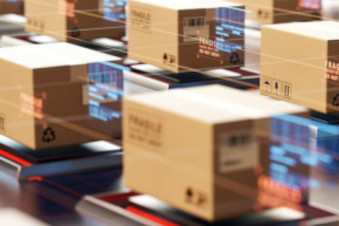Introduction
The health emergency of recent years has highlighted how important is to ensure operational efficiency in Public Health.
However, operational efficiency is not always easy to achieve, especially in the healthcare sector, where the causes of slack and delays are numerous.
One of these is the frequent episodes of physical and verbal aggression against doctors and nurses.
Assaults on personnel are not only dangerous for healthcare operators, but also for patients, for two main reasons: firstly, if an operator is attacked,
he may not be available in cases of emergency and urgency; secondly, these events disturb the peace in the hospital environment, a condition which is instead of
extreme importance in a context of care where the tranquility and well-being of the patients should be guaranteed.
Episodes of aggression are so frequent (the health sector is among the sectors most subject to the phenomenon of aggression) that the Ministry of Health has taken
measures in this regard with the National Prevention Plan, which provides for a specific central action precisely on the subject to protect the health and safety of workers.
Risks for operators and patients
As anticipated above, aggressiveness towards healthcare operators is growing.
These are serious facts that affect the psycho-physical state of the operators, leading them to develop
work-related stress syndromes, such as burnout syndrome.
According to INAIL data
for the five-year period 2016/2020, there were 12,000 occupational accidents for healthcare personnel recorded as violence, assaults and threats, with an average
of around 2,500 a year. Aggressions (physical and/or verbal) in the workplace affect on average one third of nurses in a year, therefore around 130,000 cases, with an
"undeclared" unreported to Inail of around 125,000 cases a year. In addition, 75% of assaults concern women.
The attacks have been traced to various causes, such as concerns for one's own health or that of loved
ones, communication problems between the professional and the patient, staff shortages and the large number of users in some offices.
The resulting tensions can generate aggressions towards healthcare professionals.
The situation worsens in even more risky care settings, such as psychiatry for example.
According to the data collected through the Inail questionnaires, 91% of the attacks took place in
the clinics and/or receptions of medico-legal centres. In 61% of cases they were made by assisted persons while in 21% of cases by
family members of the assisted person. 56% of operators stated that they were alone at the time of the attack.
As for the reactions, 33% of the participants responded
of having done it alone, while only 27% reported having asked for help or having been helped by another person.
RTLS for safety
Violence and assaults have important consequences on the quality of work and on the operational performance of personnel. This obviously also affects the quality of the health service. To solve this important problem, RTLS (Real Time Locating System) solutions for Indoor Tracking can be used.
Thanks to these solutions, in addition to the possibility of tracking assets, reducing waste and loss of machinery and tools, it is also possible to increase the safety of healthcare professionals and patients. Through the use of devices equipped with both positioning sensors and an anti-panic button, if an operator (or a patient) were to find themselves in difficult or emergency situations, they could easily press the button and colleagues would be able to intervene promptly after have received the geolocated-alarm.
RTLS solutions allow to:
1. Locate the patient
2. Locate the staff
3. Track Assets
4. Track activity
There are various technologies to implement this type of system, and among these one of the most used is the standard Bluetooth® LE (or compatible wireless protocols), thanks to its invasiveness, reduced energy consumption and low cost. RTLS that are based on Bluetooth® LE technology consist of three main components: tags, antennas, and software. The first component is the set of floating tags that that must be worn by people (operators, patients, visitors) or or that need to be positioned on the assets to be tracked (electromedical devices, such as electrocardiographs, ultrasounds and probes, syringe pumps, defibrillators, electrosurgical units, external pacemakers, trolleys for computerized electronic records, etc...). Tags are active battery-operated devices which, at certain intervals (the setting of which depends on tracking needs), send a signal. The second component consists of the antennas, which are fixed devices and require wiring (unlike tags which are mobile and battery operated). The latter are positioned on the ceiling, and receive the signals from the tags. Finally, the last component is the management software, which receives the information arriving at the antennas and processes them thanks to an algorithm, then going on to provide the position data on a digital map. Another valid technology, compatible with Bluetooth LE, for structuring indoor tracking systems is the 2.4GHz Mesh technology. The latter has proved to be the most functional for applications in the healthcare sector. In this case the infrastructure is much simpler, more flexible, cheaper, and suitable for retrofit applications. This solution involves the use of all devices, including the antennas (which in this case will be called gateways), battery-operated and which do not require any wiring.
Hospitals that adopt solutions capable of monitoring patients and operators can enjoy some advantages, such as:
• Improving patient flow: overcrowding is a common problem in nearly all healthcare facilities and can lead to delays in care,
longer stays, and increased costs. RTLS can decrease the risk of overcrowding and increase efficiency by making it quick and easy to admit patients
to admission. Operators will then be able to monitor patients location and treatment progress throughout their stay, prioritizing those with critical needs.
• Optimization of the service: thanks to RTLS it is possible to follow patients as they move within healthcare facilities. The data, accessible by clinicians
via mobile apps on smartphones or handheld clinical tablets, can reduce treatment delays caused by a wide range of problems. For example, you can alert if a patient has
been left in a waiting room for too long, and caregivers will always know where the equipment is to move people without delay.
• Increased patient safety: with RTLS you can monitor patients, 24 hours a day, alerting doctors if a patient has moved beyond a predefined area or if he has
suffered an accident.
• Emergency Response Speed: doctors, healthcare professionals, and security personnel will be able to see every member of their team on a map and quickly
mobilize resources to respond to emergency conditions.
• Optimize the use of operators: thanks to RTLS technologies, doctors can be automatically assigned to patients based on their proximity. Hospitals can
then analyze historical data to accurately predict demand, adjusting staffing levels to better meet patient needs.
These are just a few of the ways RTLS can help improve operational efficiency, increase security, and reduce expenses.
A successful application case: Tuscan Surgical Center
Thanks to the ATLAS Project, a tracking system, based on mesh technology, was tested at the Tuscan Surgical Center. This system solves numerous problems in the hospital environment:
• localization of the positions of patients and employees within the hospital
• increased operator safety thanks to devices with geolocated alarm calls
• prevention of patients falling out of bed in post-surgery situations
• control of entrances and exits in the building and on the various floors
• location of assets (ultrasound, defibrillators) for
the optimization of logistics
• possibility of reconstructing the history of the positions of a given
asset/person
This system has made possible to offer a single RTLS infrastructure for multiple functions:
personnel localization, asset tracking, identification and localization of alarm events, control of unauthorized exits.
The results showed a decrease in search times
of medical devices and an improvement in the resource utilization rate.
The innovative solution MeshCube has made possible the development of a
totally wireless infrastructure. The absence of wired infrastructure translates into low design and installation costs and allows perfect
adaptability even in the case of retrofit installations on existing buildings. In fact, in the market of RTLS solutions for healthcare,
ATLAS has developed a unique model: while the existing RTLS solutions are aimed at Smart Hospitals, ATLAS is aimed at every hospital facility,
even the most technologically dated ones, with the aim of transform it into a Smart Hospital with a limited economic investment.
Another rewarding element of the developed solution is the fact that it does not require the use of third-party communication infrastructures
(for example the hospital's WiFi network). This guarantees the service manager complete control of the functionality and operation of the system, in all its hardware and software components, from the periphery (tags, anchors) to the center (application software).
BlueUp RTLS healthcare solutions
The RTLS solutions offered by BlueUp are all based on the Bluetooth® LE standard or compatible wireless protocols.
BlueUp offers three different RTLS solutions that differ in performance, cost and installation complexity.
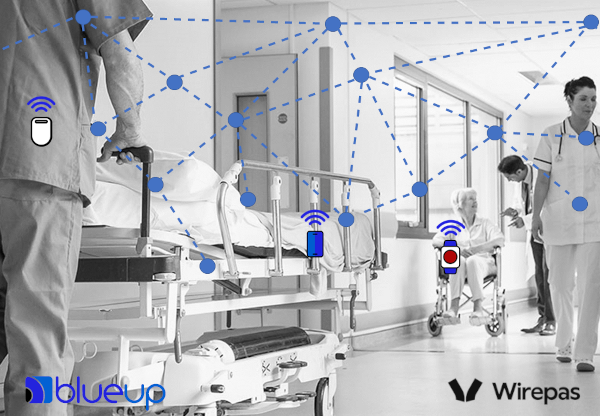
MeshCube is a unique solution on the market, with a completely wireless infrastructure based on a communication network in Wirepas Mesh 2.4GHz technology. With this technology all design, installation and wiring costs are reduced to almost zero, which makes it extremely economical and suitable for applications concerning automatic inventory, asset tracking, distributed monitoring via sensors.
LocateBLE allows the localization of assets and people in real time through algorithms based on RSSI (Received Signal Strength Indicator) and trilateration. The rewarding feature of LocateBLE is its independence from hardware: the platform, in fact, is designed to be compatible with multiple types of Bluetooth® LE antennas on the market: Bluetooth® LE beacon gateway, WiFi access point with Bluetooth® LE interface, Zigbee or mesh modules with Bluetooth® LE support. This flexibility makes LocateBLE suitable for a wide range of Real-Time Asset Tracking applications.
